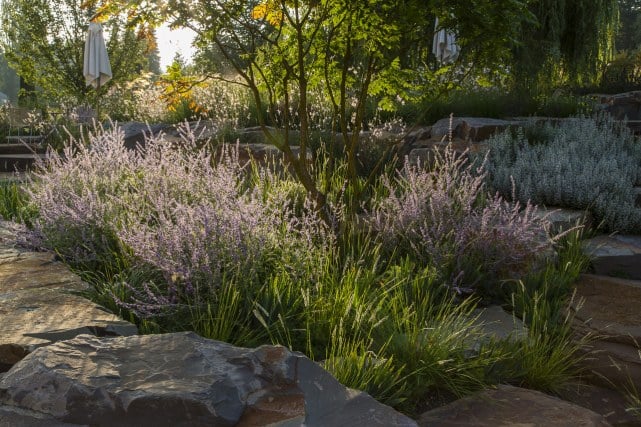
20. September 2018
Grasses: swinging ornaments in the garden
The gardener and philosopher Karl Foerster described them as “grasses are the hair of Mother Earth” and they are gaining increasing levels of influence in the design of new gardens. Not only is their innate lightness impressive, but in addition, their many possible uses are an absolute enrichment for every plantation. “They bring a fourth dimension to gardens. In even the lightest wind they clearly show movement,” explains garden designer Peter Berg. They create the connection of the garden with the landscape.
Cutting at the right time
Both the selection of grasses – some spread wildly or sprout underground – and the right cutting time are essential. According to Peter Berg, pruning should take place “preferably in springtime shortly before the budding, a hand’s width above the ground”. Soon fresh green sprouts out, growing into filigree stalks in spring. In summer, inconspicuous grass might well reward with a flowering splendour. And even in autumn and winter these plants have their very own charm; adorned with frost or snow or delicately illuminated by the rays of the winter sun.
The right combination makes the difference!
The selection of grass varieties should absolutely depend on the conditions of the garden. Is the location dry, humid, sunny or half in shadow? How much space does the grass need, does it grow upright or does it arch to the side? The surrounding planting is also of importance. The combination of spring onions and grasses is particularly recommended, as they already provide an attractive garden bed in spring. “Small, simple wild forms should be given preference over large-flowered tulips and daffodils,” says Peter Berg.
Early weeding
Unwanted plant species have plenty of space to spread on uncovered soil. Some are carried in by the wind, others already slumber in the ground. Peter Berg therefore advises early weeding, especially when planting new plants, in order to prevent strong seed production and thus wild growth from the outset. Because once the weeds have blossomed, they quickly seed themselves in the bed and begin to dominate.
Allow Peter Berg’s “company garden” for “Arendberg Monastery” to inspire you: Arendberg Monastery


